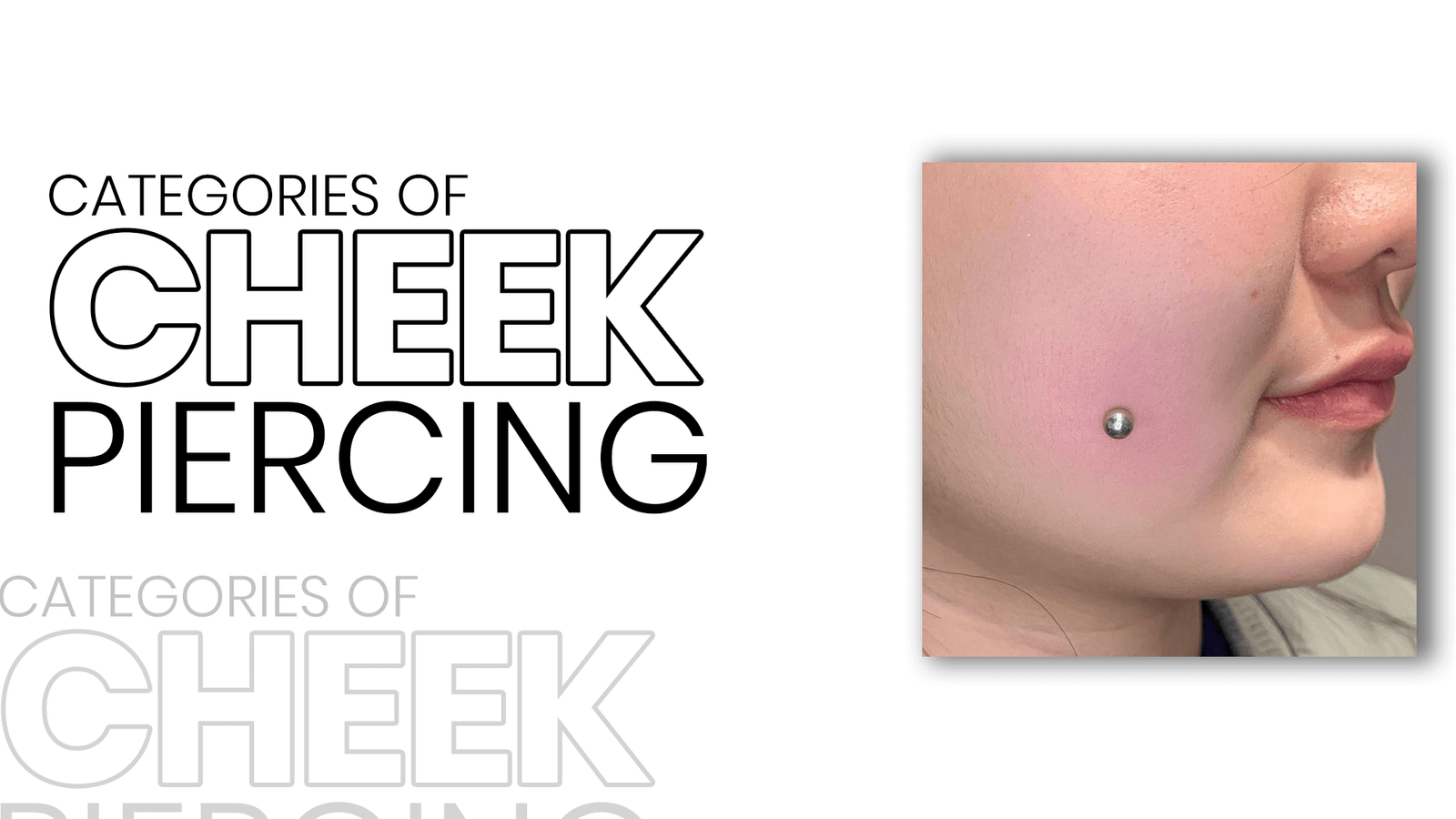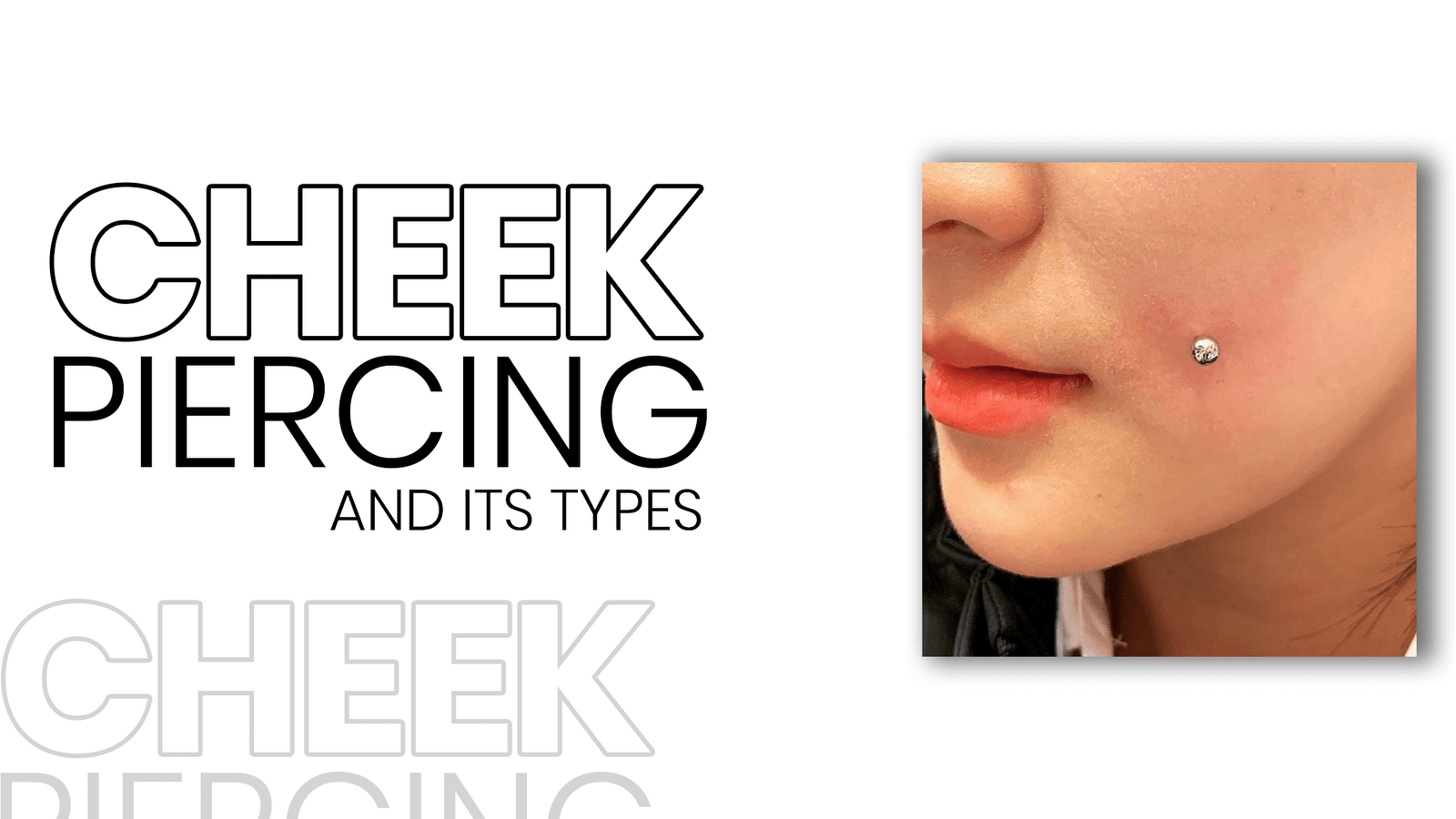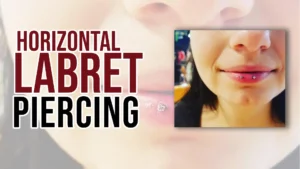Overview of Cheek Piercing
Above the side of the mouth, where a dimple is or would form, a cheek piercing—also referred to as a dimple piercing—is performed. Although it rarely hurts, some patients have reported tasting blood after the treatment. Cheek piercings have some hazards, so an expert must execute the piercing to prevent problems. Fewer people get their cheeks pierced than other types of piercings since they risk severe complications if they do not take proper safety measures.
When we see a smile with dimples, we all tend to get a little sentimental. Even the slightest smile can brighten the face due to the little holes at the mouth’s edge. You can mimic the dimpled appearance even if you don’t have dimples. Delicate jewelry designs are worn where your natural dimples would be, and when you smile, they draw slightly inward to add the same brightness to your smile as natural dimples would. Cheek piercing has become more prevalent in recent years, although it is famously challenging to receive. Many piercers may even attempt to persuade you to get another piercing or decline. In this article, we will discuss its categories, different common types of cheek piercing, its healing time, complications, cost, and the procedure to do it.
Categories of Cheek Piercing

Following are the three variations of cheek piercings:
Single Cheek Dimple Piercing
One cheek is perforated in this situation. It’s a great choice if you only want to get one cheek pierced at a time and are still waiting for two on either cheek or if you want to pair it with other facial piercings.
Dermal Cheek Piercing
Skin piercings in the cheek lack an exit hole. The jewelry fits in one direction and lies below the epidermis. Because it doesn’t go deep, you can receive this piercing anywhere on your cheeks. A dermal anchor is used to secure the jewelry under a few layers of skin known as dermal piercing.
Cheekbone Cheek Piercing
Higher up on the face, this form of piercing is sometimes called an upper or high cheek piercing. These piercings are often surface or dermal because they cannot pass through your oral cavity.
Stay clear between these categories and types of cheek piercings. All kinds of cheek piercings lie in these categories.
Types of Cheek Piercing
As we look into any piercing, there are several types and designs. Cheek piercings come in a variety of formats, too, and have different types, including:
Dimple Piercing
These piercings are made in the natural dimples on either side of the cheeks. Usually, they are tiny, plain studs or beads that rest flat against the skin. These piercings are a popular option for those who desire a more discrete piercing because they are known for producing a delicate, beautiful look. A dimple piercing is another name for a cheekbone piercing. This is because the piercing appears where a dimple would typically be, giving the appearance of a dimple.
Anti-Dimple Piercings
These piercings are positioned just above the two cheek dimples present naturally. They are intended to give the appearance of a dimple where none exists. They frequently consist of tiny, basic studs or beads like dimple piercings.
Snake Bite Piercings
This type of piercing involves two cheek piercings, one on each side of the face, usually close to the corners of the mouth. Usually, a simple hoop or barbell serves as the jewelry. A labret, Monroe piercing, or another lip piercing is frequently worn alongside them.
Get the expert guide about snakebite piercing.
Cyber Bites Piercings
The Cyber Bites Piercings are a set of four piercings that combine a medusa piercing (above the upper lip) and a snake bite piercing. The medusa piercing is above the center of the lip, and the snake bites are on either side of the face, arranged in a symmetrical pattern.
Angel Bites Piercings
These piercings consist of two cheek piercings joined with a set of piercings on either side of the upper lip. The upper lip piercings are positioned slightly above the corners of the mouth, and the cheek piercings are evenly spaced apart on either side of the face.
Joker Bites Piercings
These piercings resemble snake bites but are positioned farther back on the cheeks, creating the impression of a smile akin to the Joker. Usually, the jewelry is a little hoop or barbell.
Butterfly Kiss Piercings
One pair of piercings on each side of the face is positioned just below the lower eyelid and is known as butterfly kiss piercings. They usually consist of tiny, discrete studs or pearls that resemble butterflies landing on the cheek.
Teardrop Piercings
These piercings look like a teardrop on the cheek and are positioned just below the lower eyelid. Usually, the jewelry consists of a tiny, plain stud or bead.
Crescent Piercings
These piercings are located close to the temple on the upper portion of the cheek. Usually, they are little, plain studs or beads that trace the contour of the cheekbone.
Star Piercings
These three-piercing sets are arranged on the cheek in a triangle configuration. Usually, they are tiny, plain star-shaped beads or studs.
The possibility of nerve injury makes cheek piercings a high-risk procedure. Therefore, having them completed by a qualified piercer with experience in this field is crucial.
The procedure of Cheek Piercing
You need to follow the given steps to do cheek piercing:
- The piercer will examine the mouth properly to avoid damaging the parotid ducts responsible for depositing saliva into the mouth. This is because you can’t repair these glands once they are injured.
- For the individual getting the piercing to see what it will look like, the piercer will mark where the jewelry will go. The person will occasionally swish an oral rinse and request a topical anesthetic to lessen pain.
- Instead of using a piercing gun, piercers typically use a needle to pierce the cheek from within or outside the mouth. When piercing from the outside, the piercer may insert a cork or other barrier into the mouth to safeguard the tongue and gums.
- The piercer may use a threaded needle for the jewelry to enter the hole in one direction.
Healing Time of Cheek Piercing

Healing time for cheek piercings ranges from 6 to 12 months. Typically, the piercing swells as it heals. Piercers frequently use longer bars to avoid the piercing embedding in the swelling flesh. When the swelling has diminished, you can replace the bar with a shorter one.
What will the price of Cheek Piercing be?
Depending on where you are, getting your cheeks pierced could cost anywhere from $30 to $100. Remember that since it is a double piercing, it will cost slightly more than a single piercing, even if you aren’t paying for two piercings.
Complications of Cheek Piercing
The following are the most common complications of cheek piercings:
Parotid gland damage
It is the most dangerous complication of cheek piercing. Due to the possibility of damaging the parotid gland, some piercers choose not to pierce the cheeks. Saliva can leak outside of the mouth of the parotid gland, which produces it and is pierced. Using piercers with experience is a great approach to prevent this. Due to their expertise and understanding, they can pick the ideal location to avoid injuring the gland.
Infection
Rejection and piercing infections are the most side effects. It is likely infected if you have redness, itching, persistent swelling, and yellow discharge from your piercing. You can treat infections at home with saline solutions and warm compresses. However, if the problem continues, you should contact a doctor.
Swelling
In the aftermath of many mouth piercings, swelling occurs. A cold compress applied to the swollen area will reduce its effects. Using a more extended bar when you first have the piercing; will keep the bar from becoming stuck in the skin as the piercing swells and heals.
Fluid Pockets
All piercings should enlarge, but some swellings may be lumpy or have an athletic center. This is called a fluid pocket or lymphatic lump. It is brought by lymphatic fluid that has built up in your cheeks and formed pockets surrounding the piercing. Although you can drain the fluid, doing so might be challenging and result in lumps.
Scarring
Scarring is familiar with any cheek piercing. For some people, it is their goal to get a scar when they remove their jewelry because this could give them a dimple appearance. However, if you don’t want eternal marks, avoiding cheek piercing is best.
Biting the Jewelry
You can solve the problem by taking some extra care. If you chew carefully while eating, you will not bite the jewelry. However, if the bar is too long and you cannot avoid it, it is better to replace it with a shorter one and chew food carefully.
Cheek Piercing Aftercare
Here are some suggestions to help the healing process go more smoothly:
- It would help to clean a saline solution and a cotton bud once or twice daily.
- Refrain from messing with the jewelry and touching the piercing.
- Keep your hands clean before touching the piercing.
- Do not use facial cleansers or makeup because they can irritate the piercing site.
- If you see any colored discharge or abnormal swelling, talk to your piercer.
Summary
Finally, cheek piercings have recently become more well-known as distinctive self-expression. People can pick from various piercing types, including dimple, crescent, and star piercings, according to their preferences and personalities. As with any piercing, selecting a reputable piercer and observing the proper aftercare instructions to prevent issues are crucial.





